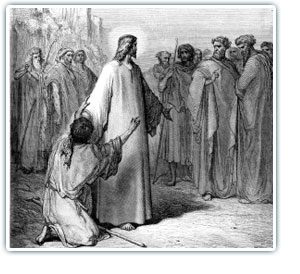
Some of the earliest historical writings of the most ancient civilizations include documentation of the use of divine healing throughout the ages. Divine or supernatural healing can be loosely defined as the calling upon a higher power for the cure of mental and physical health issues. While there is certainly proof that many ancient peoples used this form of cure, it can be difficult to discern between myth and fact when there is little evidence of how effective these cures actually were. Certainly, those involved felt that the results warranted permanent records, but unfortunately, this is simply not enough for those who wish to have empirical evidence in order to believe.
In the 2nd century AD, the Greece people kept records of healing with supernatural help in the form of inscribed temples in Epidaurus. These inscriptions are some of the most well-known examples of historically accurate and detailed records of faith or divine healing. There are still six existing tablets in place that detail the healing powers that the Greek semi-mortal Asclepios provided for the believers in their dreams. In fact, the ancient symbol of healing – the staff and the snake – actually began with this heroic figure.
Could Healing Come Through Dreams?
Another well documented historical case of religious healing involves the ancient Egyptian leader Ptolemy, who believed firmly in divine healing, and was visited in his dreams by the god Serapis during times of illness. Ptolemy actually installed a statue of this mythical and divine healer inside Alexandria, and many Egyptians today still call upon Serapis for visions and instructions on healing. Much like the Greeks, the Egyptians seemed to feel that much healing could be brought about during sleep, and that the barriers of the mind were lowered to allow a divine visitation. It was only during sleep or visions that this visitor would instruct the believers, and provide the answers to good health.
What About Healing Today?
In more modern applications, the use of faith or spiritual healing has focused primarily on the mind over matter phenomenon. It is a well known but little understood fact that the mind is able to call upon great reserves of energy, healing and mental powers when the medical profession has long given up on the patient’s chance of survival. This is considered a form of divine intervention, in that the body was created by a higher power, and thus it works within us for self-healing. While scientists and physicians still remain baffled by this healing power, they are now much more willing to acknowledge it and encourage a positive mind-set in the patient. Some recent studies are suggesting that cortisol, which is a hormone produced during times of stress, may be interfering with the body’s natural healing process, and those who are more positive and believe in their ability call upon divine help may heal faster because there is less cortisol being produced by the body.
When human beings are able to put their faith in some form of higher power, this removes much of the burden of illness, and actually does seem to be a factor in divine healing practices. Through a person’s faith they allow themselves to be open to receive healing whether it is true intervention of a higher power, or the biological aspect of relaxation and lessened stress, the end result remains the same.
The Role of Religion
Christians are given many examples of spiritual healing in the Bible, as Jesus and his disciples are all well known to have been extraordinary healers. Modern applications of supplication and prayer to a greater power for extreme ailments have shown a remarkable improvement in the morale of the patient, as well as extraordinary recoveries.
Divine healing has been used in almost every religion throughout history. Any culture that believes in a God or gods also has a corresponding prayer or belief system for the health of believers. This not only seems to provide proof that the desire for divine intervention is a universal concept, but it can also help believers, scientists, and physicians understand the many different techniques, and why some of them work.
In today’s world, many people are able to enjoy modern applications of spiritual healing in the form of auditory sessions. Sound has been shown to have one of the most profound effects on the brain, whether for healing or for pleasure. You can combine the sound waves with the mental picture images of health to produce positive endorphins and reduce cortisol levels in the body. Let your worries go, and begin healing with sessions that guide you through a meditation-like state of mind.
There are many articles and audio programs on healing on my website. Be sure to read the articles in the healing section of my blog.